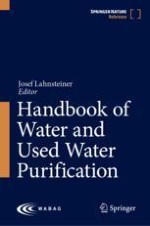2024 | OriginalPaper | Buchkapitel
33. Sludge Treatment Technologies and Systems, an Introduction
verfasst von : Bogdanka Radetic
Erschienen in: Handbook of Water and Used Water Purification
Aktivieren Sie unsere intelligente Suche, um passende Fachinhalte oder Patente zu finden.
Wählen Sie Textabschnitte aus um mit Künstlicher Intelligenz passenden Patente zu finden. powered by
Markieren Sie Textabschnitte, um KI-gestützt weitere passende Inhalte zu finden. powered by
